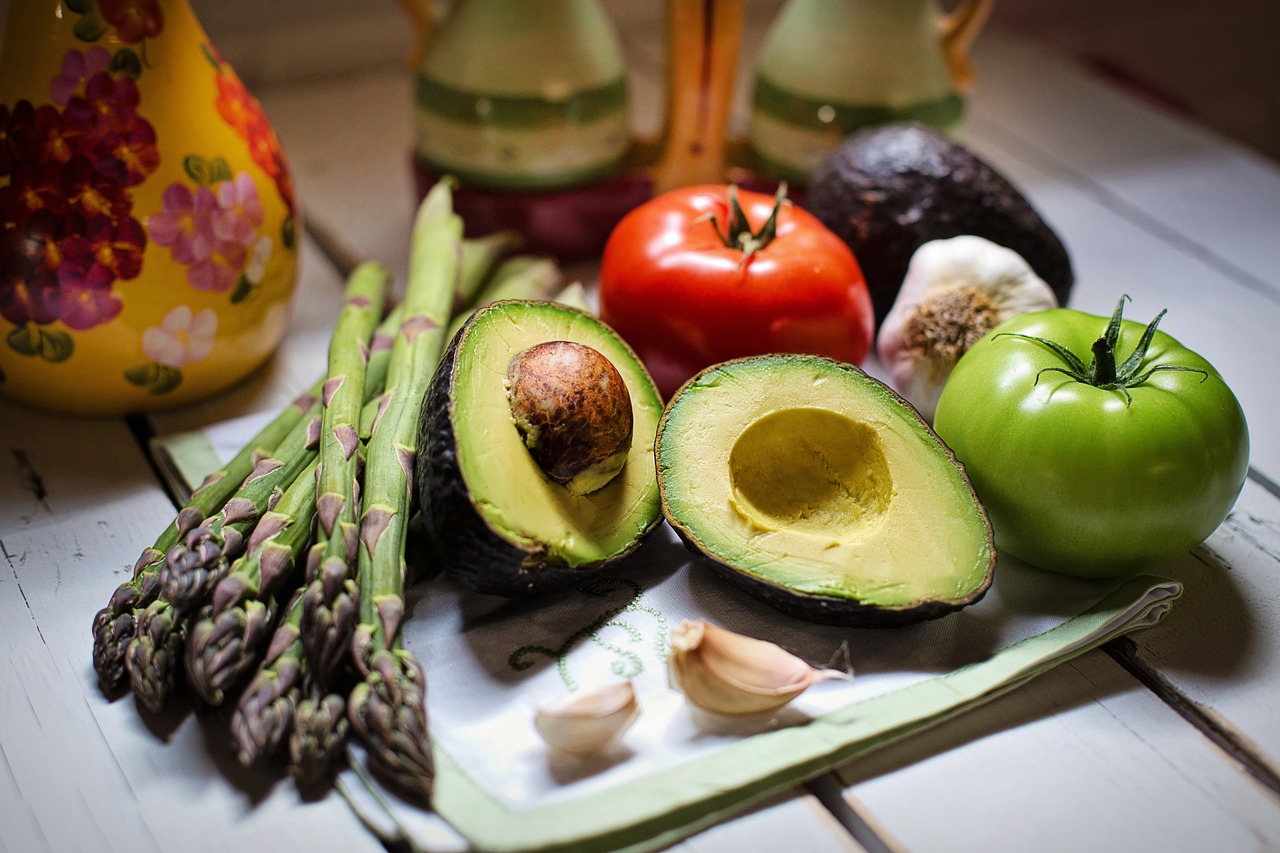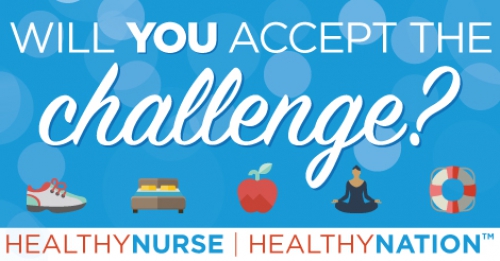Healthy Nurse, Healthy Nation™ Blog - Health Benefits of Eating Whole-Plant Foods
Published
Your diet is an essential part of healthy living. What you eat can determine how your body grows, functions, and protects itself.
Blog 1 in our Plant-Based Food Series!
Plant-based eating continues to gain popularity, and it’s easy to see why. Plants provide essential nutrients while helping you avoid the saturated fats associated with many chronic diseases, says #healthynurse Jane Esselstyn, RN. Jane is an author, educator, and presenter who’s passionate about whole-food, plant-based (WFPB) eating.
“The foundation of any long-lived culture has been grains, legumes, fruits, and vegetables,” Jane says. “Occasionally, in times of ceremony, they may have some meat. But it was like how we eat birthday cake — it’s not what was sustaining that culture.”
Over time, our diets have evolved. But Jane explains that getting back to plant-forward eating may be critical to reversing and preventing many of the chronic diseases people live with today. “Eating a diet rich in meat, oil, and processed food is like having hair in the drain or leaves in the gutter,” she says. “Your body can’t process it, and it interferes with how your body is supposed to function.”
What Does It Mean to Eat a Plant-Forward Diet?
Many people include vegetables and grains at every meal, and that side of broccoli, black beans, or brown rice certainly offers nutritional benefits. But if those foods aren’t the star of the show, you’re not getting the full benefits of a plant-based diet.
In a plant-forward diet, you eat more fruits, veggies, and whole grains while reducing your meat and dairy consumption. Focus your plate on those plant-based items instead of the standard idea of a meal — a piece of meat as the focal point and plant-based foods as “sides.”
For optimal health, Jane recommends taking your plant-based diet to the next level by only eating whole-plant foods. With a WFPB diet, you steer clear of animal and processed foods.
“Plant-based doesn’t always mean healthy. There’s plenty of plant-based junk food, such as potato chips, beer, and vegan doughnuts,” Jane says. “A plant-forward diet consisting of whole, unprocessed foods offers even greater benefits than simply avoiding meat and dairy.”
Benefits of Whole-Food, Plant-Based Eating
Plant foods contain lots of antioxidants and phytonutrients — bioactive compounds found in plants and shown by research to have significant therapeutic potential.
“Phytonutrients are chemicals and may have healing properties,” Jane says. “Following a whole-food, plant-based diet may reverse disease and is the ticket to wonderful health benefits.”
Research shows that eating a WFPB diet may:
“A healthy plant-based diet can be essential if you are sick and working toward reversing certain diseases,” Jane says. “If you’re trying to maintain your health, eating whole plant foods may help lower your risk for chronic disease.”
Tips for Eating Plant-Forward Whole Foods
Switching to strict plant-based eating may provide quick and measurable health results, especially if you have elevated blood sugar levels and high blood pressure. But before you dive into any major dietary changes, check with your healthcare provider and a registered dietician who can help you tailor the best nutrition for your health.
Once you are ready to engage in plant-forward eating, making those dietary changes can seem daunting. Jane’s advice is to consider what you already eat and make small, manageable changes.
“Most people eat better than they realize. So, instead of feeling like you must completely change everything you eat, simply modify your meals,” Jane says. “Go toward plant-based choices and away from processed sugar, meat, and dairy.” For instance, if you eat a sandwich for lunch, make it a veggie sandwich. Spread hummus on it instead of mayonnaise.
If you are ready to put more plants on your plate, Jane suggests you S.T.A.R.T.T., which stands for:
These plant-based eating resources offer additional information and tools for success:
“People are human, and eating WFPB can initially be hard to follow,” Jane says. “But it’s a natural way of eating and a path to good health.”
Do you eat a plant-forward diet? If so, do you have any advice for people looking to incorporate more plants into their meals? Share with us in our discussion below.

Not a member of Healthy Nurse, Healthy Nation (HNHN) yet? Join today!
Sign up for our monthly challenges!
“The foundation of any long-lived culture has been grains, legumes, fruits, and vegetables,” Jane says. “Occasionally, in times of ceremony, they may have some meat. But it was like how we eat birthday cake — it’s not what was sustaining that culture.”
Over time, our diets have evolved. But Jane explains that getting back to plant-forward eating may be critical to reversing and preventing many of the chronic diseases people live with today. “Eating a diet rich in meat, oil, and processed food is like having hair in the drain or leaves in the gutter,” she says. “Your body can’t process it, and it interferes with how your body is supposed to function.”
What Does It Mean to Eat a Plant-Forward Diet?
Many people include vegetables and grains at every meal, and that side of broccoli, black beans, or brown rice certainly offers nutritional benefits. But if those foods aren’t the star of the show, you’re not getting the full benefits of a plant-based diet.
In a plant-forward diet, you eat more fruits, veggies, and whole grains while reducing your meat and dairy consumption. Focus your plate on those plant-based items instead of the standard idea of a meal — a piece of meat as the focal point and plant-based foods as “sides.”
For optimal health, Jane recommends taking your plant-based diet to the next level by only eating whole-plant foods. With a WFPB diet, you steer clear of animal and processed foods.
“Plant-based doesn’t always mean healthy. There’s plenty of plant-based junk food, such as potato chips, beer, and vegan doughnuts,” Jane says. “A plant-forward diet consisting of whole, unprocessed foods offers even greater benefits than simply avoiding meat and dairy.”
Benefits of Whole-Food, Plant-Based Eating
Plant foods contain lots of antioxidants and phytonutrients — bioactive compounds found in plants and shown by research to have significant therapeutic potential.
“Phytonutrients are chemicals and may have healing properties,” Jane says. “Following a whole-food, plant-based diet may reverse disease and is the ticket to wonderful health benefits.”
Research shows that eating a WFPB diet may:
- Decrease inflammation, relieving symptoms associated with autoimmune conditions
- Enhance skin health, improving skin conditions such as acne and atopic dermatitis
- Improve heart health, lowering blood pressure and cholesterol levels
- Increase insulin sensitivity, which normalizes blood sugar numbers
- Reduce erectile dysfunction and enhance sexual function
- Reduce the risk of colorectal cancer in men
- Support mental health, reducing the risk of depression and improving mood
“A healthy plant-based diet can be essential if you are sick and working toward reversing certain diseases,” Jane says. “If you’re trying to maintain your health, eating whole plant foods may help lower your risk for chronic disease.”
Tips for Eating Plant-Forward Whole Foods
Switching to strict plant-based eating may provide quick and measurable health results, especially if you have elevated blood sugar levels and high blood pressure. But before you dive into any major dietary changes, check with your healthcare provider and a registered dietician who can help you tailor the best nutrition for your health.
Once you are ready to engage in plant-forward eating, making those dietary changes can seem daunting. Jane’s advice is to consider what you already eat and make small, manageable changes.
“Most people eat better than they realize. So, instead of feeling like you must completely change everything you eat, simply modify your meals,” Jane says. “Go toward plant-based choices and away from processed sugar, meat, and dairy.” For instance, if you eat a sandwich for lunch, make it a veggie sandwich. Spread hummus on it instead of mayonnaise.
If you are ready to put more plants on your plate, Jane suggests you S.T.A.R.T.T., which stands for:
- Start with oatmeal daily to help you move away from eggs and bacon.
- Taste the rainbow by eating a variety of colorful produce.
- Add legumes (beans, peas, and lentils) to increase fiber and protein intake without adding saturated fat.
- Rely on water instead of sugary drinks to stay hydrated.
- Trade out oil, which contains concentrated calories and very little nutritional value. Leave it out of homemade salad dressings, and substitute applesauce for oil in baked goods.
- Trade out meat and substitute legumes and tempeh (fermented soy), which are high in protein.
These plant-based eating resources offer additional information and tools for success:
- American College of Lifestyle Medicine, an HNHN Champion, provides articles about the benefits of plant-based eating for disease and online training focused on food as medicine.
- Esselstyn Foundation offers plant-based eating resources, including related research, healthy eating articles, and WFPB video recipes.
“People are human, and eating WFPB can initially be hard to follow,” Jane says. “But it’s a natural way of eating and a path to good health.”
Do you eat a plant-forward diet? If so, do you have any advice for people looking to incorporate more plants into their meals? Share with us in our discussion below.

Not a member of Healthy Nurse, Healthy Nation (HNHN) yet? Join today!
Sign up for our monthly challenges!
Blog Nutrition
11/07/2023 4:03pm CST



Post a Comment or Question
I like eating a rainbow of fruit and veggies. Mostly eat whole grain or oatmeal for breakfast and add apples, and a few nut to it
@Virda Swales, BSN My son and I have been making veggie/fruit trays as snacks lately and he's made some beautiful arrangements! It makes veggies more fun!
I have been eating a VLF-WFPB (very low fat whole food plant based) diet for several months now. I feel amazing! I have more energy, less belly pain and sleep better too. Eating this way truly improves glycemic control and reduces the inflammation that is associated with so many chronic diseases including heart disease, diabetes, osteoporosis and even depression. I encourage you to give it a try.
I love this post. I feel a need to go to Traders Joe now :)